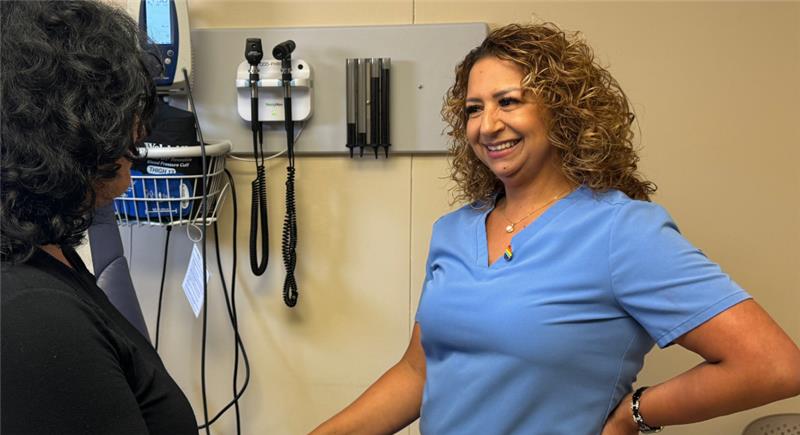Teresa Manning has been in and out of hospitals since she was 18. The culprit? Heart failure, a condition that causes your heart muscle not to pump blood as well as it should. Now 38, Teresa has finally found a solution to help – a wireless heart monitor called CardioMEMS™.
Dr. Richard Kiel, co-medical director of the Advanced Heart Failure Program at Community Regional Medical Center said studies have found that patients are overall living longer and healthier lives, because they’re able to read pressure measurements from the body without the patient having to come in for a doctor visit.
“They’re no longer chained to a doctor’s office and in and out on a weekly or bi-weekly basis – they’re able to now have this monitoring at home and come in and see me every one, two or three months sometimes. It’s kind of a cool way to give back some quality of life,” Dr. Kiel said. Limiting doctor visits has become even more important since the COVID-19 pandemic hit requiring people to maintain social distancing as much as possible.
What is CardioMEMS™?
The CardioMEMS™ system is the first and only FDA-approved wireless heart monitor. It’s been proven to significantly reduce heart failure hospitalizations and improve quality of life for patients. Community Regional implemented the system in 2019.
This real-time monitoring of vital information can catch heart failure symptoms 10 to 14 days before a person notices. And patients with heart failure can get checked in the comfort of their own homes.
How does CardioMEMS™ work?
The system is placed next to the patient’s heart during a minimally invasive procedure that takes less than an hour. CardioMEMS™ is a loop of metal in a piece of plastic about the size of a dime placed in one of the arteries of the lungs – usually the left, middle pulmonary artery. It requires no batteries and shouldn’t need replacing. Next, a sensor within the system begins gathering data.
“What CardioMEMS™ offers us is a really exciting treatment. We’re able to basically implant a pulmonary artery pressure sensor. It’s a very simple, very elegant solution,” Dr. Kiel said.
Once home, the patient lies on an electronic pillow that’s paired with the CardioMEMS device for a few minutes every day so the readings can be sent back to doctors. The pillow has a speaker in it. The speaker transmits an ultrasound signal that bounces off that little metal ring, the ultrasound signal vibrates back and depending on the blood pressures and the lungs, the frequency that it vibrates back changes.
“We’re actually able to measure in real time, in the patient’s home, what the pressures in the lungs are doing,” Dr. Kiel said.
Benefits of CardioMEMS™
Dr. Kiel said Teresa often doesn’t show a lot of symptoms leading up to a hospitalization. But the CardioMEMS™ implant catches symptoms early and can prevent an event from happening to her.
“Having the CardioMEMS™, he can see it, he can check on me. And I’m thankful for that,” Manning said.
It’s expected that Manning will have CardioMEMS™ for the rest of her life.
“It’s been a long journey, but I’m taking it one day at a time.” Manning said.


.jpg)


